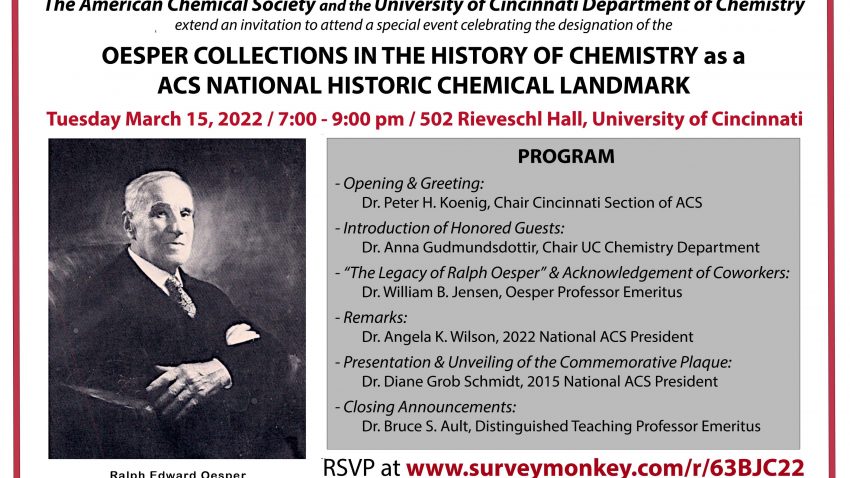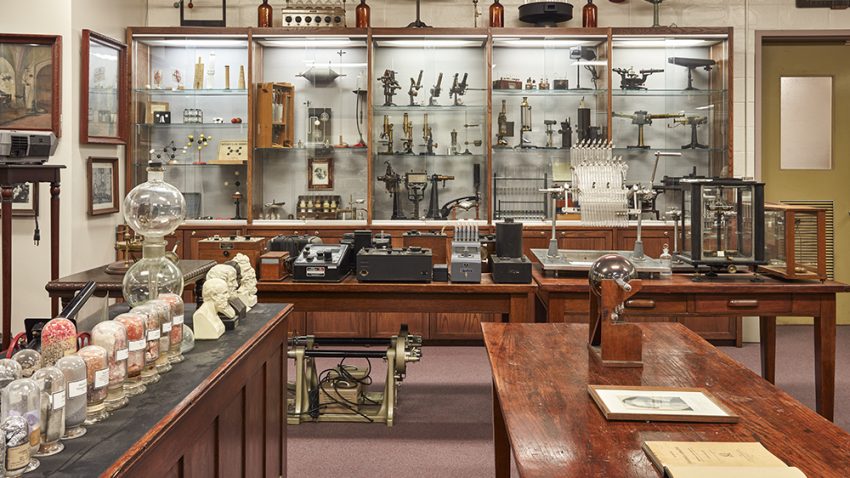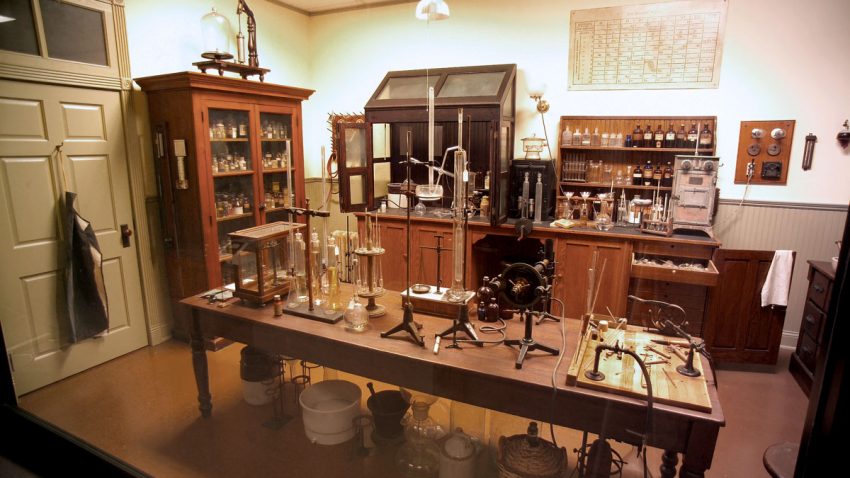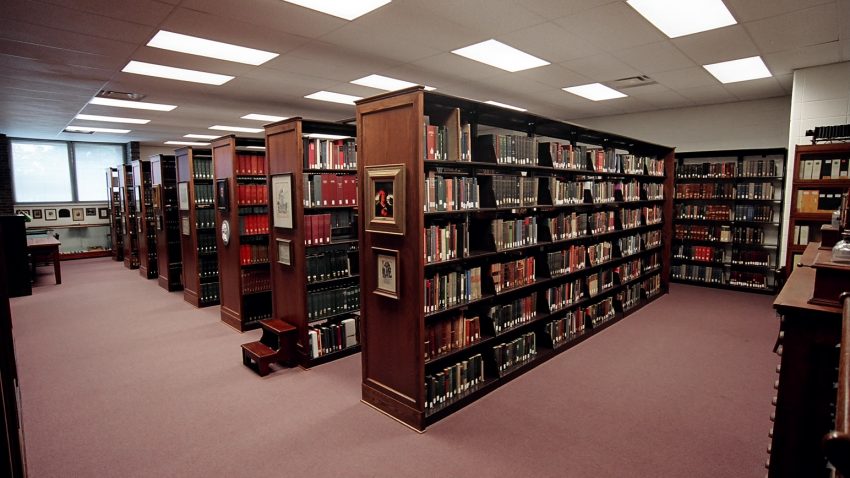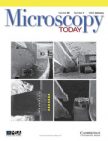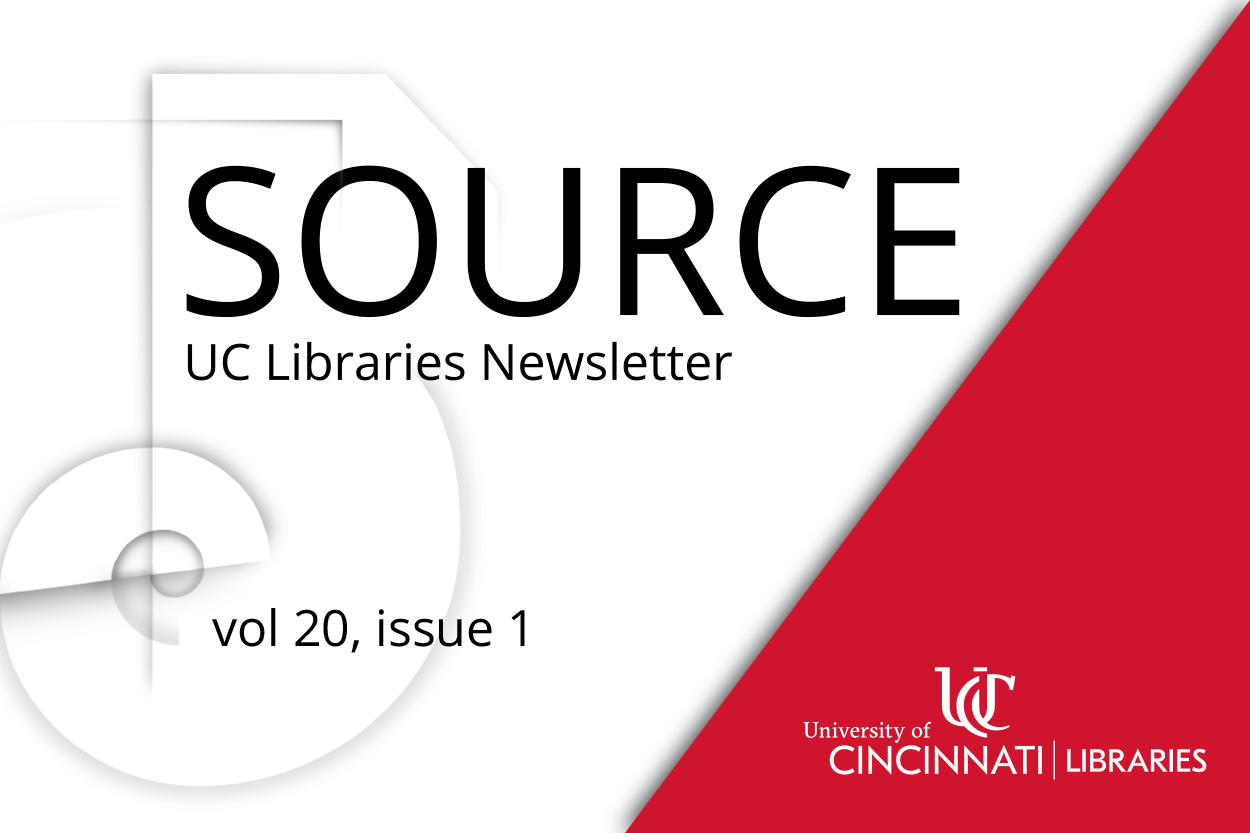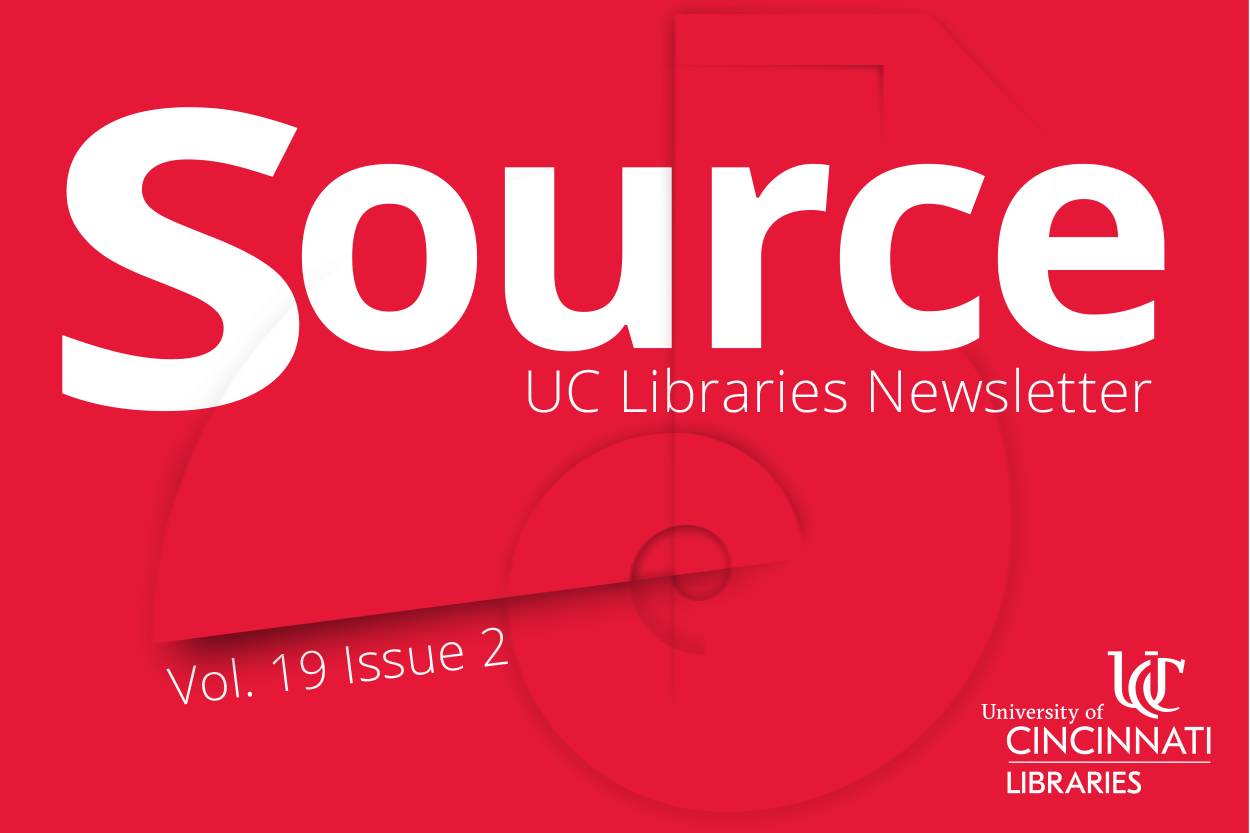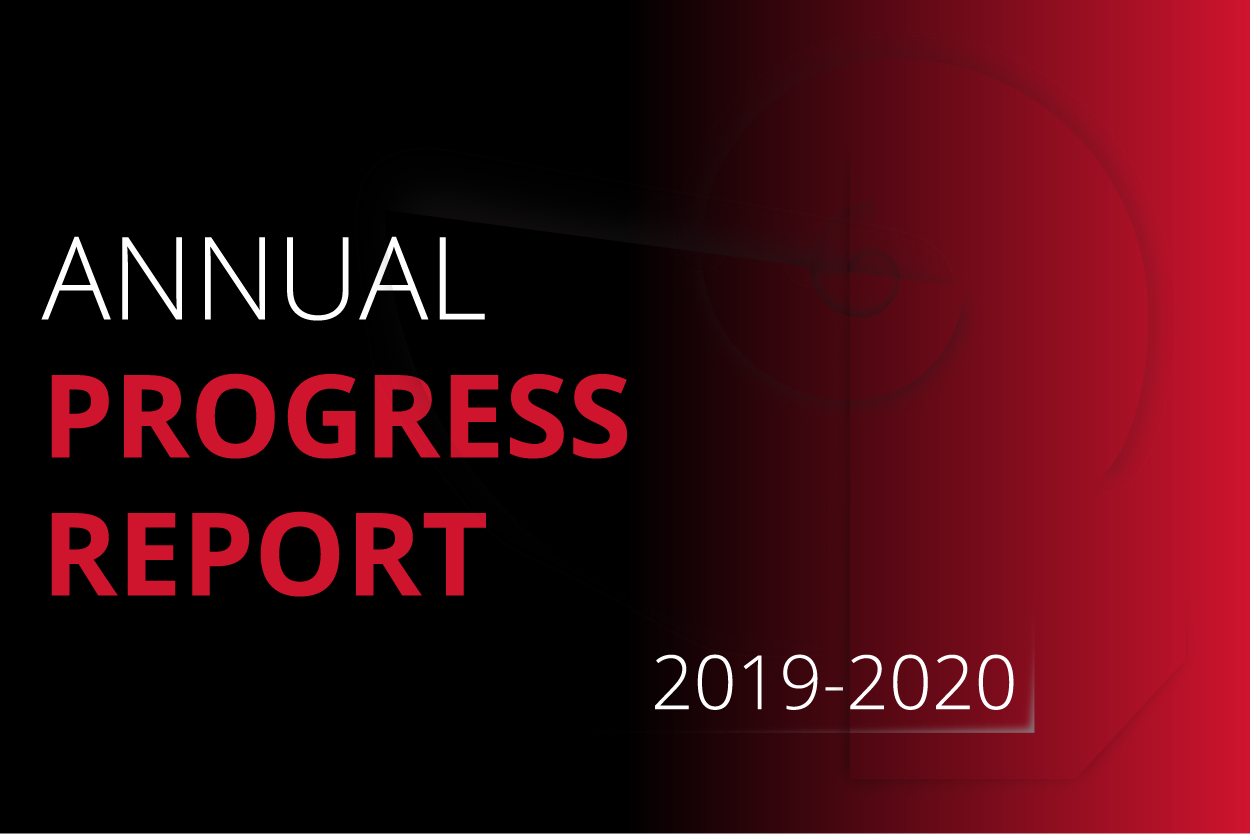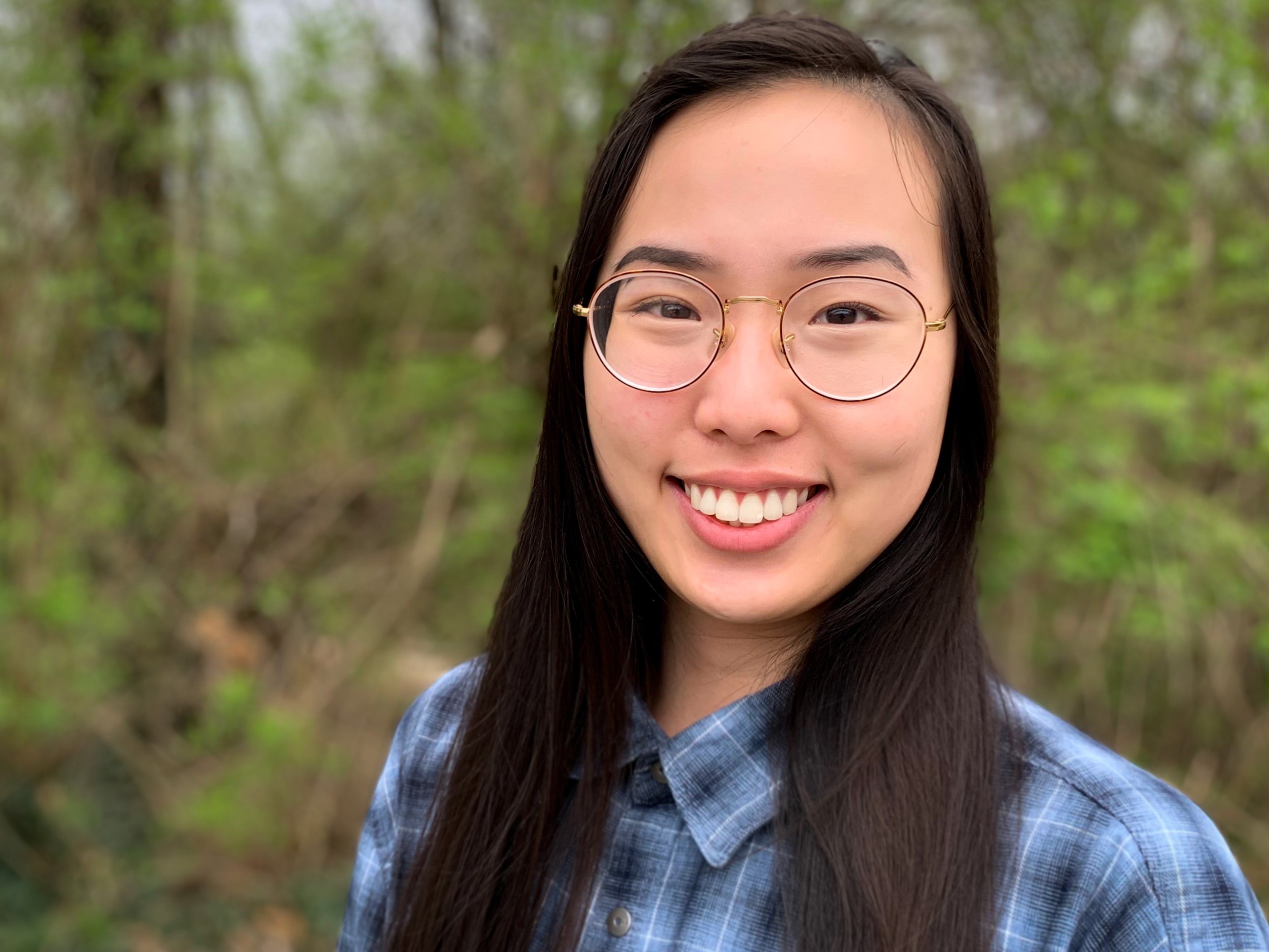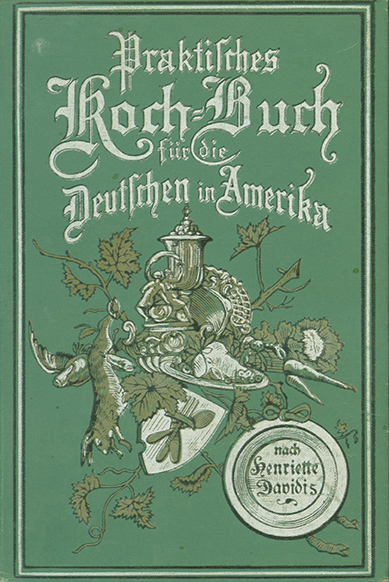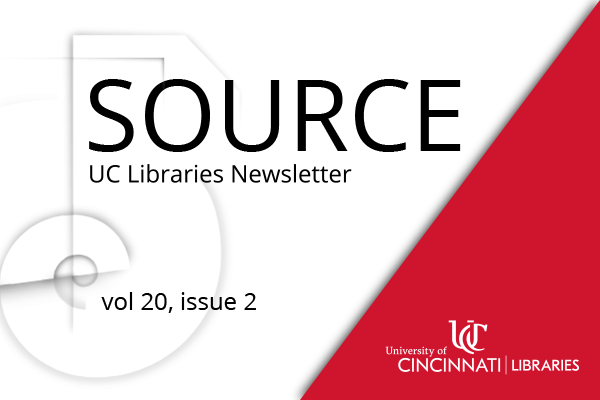
Read Source, the online newsletter, to learn about the news, events, people and happenings in UC Libraries.
In this issue of Source, we announce our updated Strategic Framework – NEXT Directions. We celebrate Mikaila Corday receiving the 2022 Marian Spencer Ambassador Award for Staff and meet OhioLINK Luminaries intern Marvin Jones. We look back at three recent big events – the Oesper Musuem’s receipt of National Landmark designation, the six-part lecture series The Illustrated Human: The Impact of Andreas Vesalius and the ever-popular International Edible Books Festival. Finally, we look forward to Preservation Week with a sneak peek of The Preservation Lab.
Read these articles, as well as past issues, on the website. To receive Source via e-mail, contact melissa.norris@uc.edu to be added to the mailing list.

